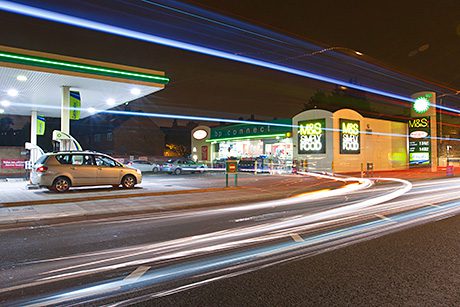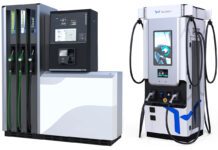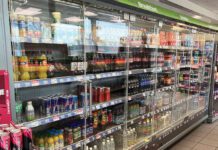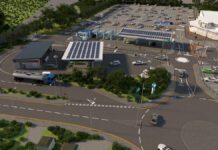
FORECOURT sites with convenience stores have a major opportunity to achieve commercial success in the coming years but only if their operators know the market well, says Ian Daniels, business development controller at specialist wholesaler Palmer & Harvey.
Quoting IGD Research, he said forecourt convenience stores make up the fourth-largest channel in the £35.6bn convenience market with 11.2% of the market
He sees the key drivers of growth in forecourt stores at the moment as:
• bespoke solutions for ranging, supply and marketing that have enabled affiliated independents to face up to competition
• developments in fresh food and food to go
• improved operational standards especially with regard to customer toilets
• changes in shopping behaviour.
But even though behaviour has changed in recent years, forecourt shoppers can still be grouped by three profiles, he said.
One group buys only fuel, a second group buys both fuel and grocery and others just purchase shop items. Forecourt operators must ensure they are communicating with each group to boost sales, he said.
Daniels recognised challenges and opportunities ahead for forecourts.
“A recent report from IGD states that the forecourt market is beginning to stabilise after a period of restructuring; however sales are down 3.7% and the IGD estimate for the number of convenience forecourt stores shows a decrease of 5.2% to 7,537, excluding joint ventures,” he said.
Increased costs of motoring leading to improved efficiency of cars and consumers switching to diesel have all decreased the frequency of full fill-ups. And those factors are putting pressure on forecourt operators to demonstrate value and to encourage a wider range and greater frequency of shopping trips from customers.
Forecourt operators can overcome some of the challenges and satisfy the needs of their customers by making small changes or additions to their facilities, he suggested. For example, introducing services such as cash machines, parcel pick-up, or click and collect functions, will help customers feel more inclined to visit and, ultimately, spend money.
Forecourts on truck routes should tailor the forecourt facilities to the needs of the truck driver. Food service and fast food options should be preferred to full convenience formats. Providing the facility to park, dwell and wash is likely to be welcomed by truck drivers too.
Forecourts with both a fuel and grocery facility should make parking available to ensure the forecourt does not get congested with the vehicles of those people spending time in store. Fuel sales very important and a congested forecourt will put many customers off.
Palmer & Harvey offers profiling of a forecourt’s customers and its competition to help the forecourt business tailor its range to meet customer demand, he said. It also prepares appropriate planograms for forecourts.
In smaller convenience store formats, which are still in the majority, retail solutions such as day-part merchandising and seasonal planograms can help retailers to maximise sales and improve stock levels in store. Day-part retailing encourages nearly 60% of shoppers to buy more and visit a store more frequently and according to recent HIM research 79% of convenience store shoppers want associated products to be merchandised together, Daniels said.













